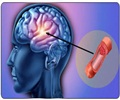As described in the current online issue of the Journal of the American Heart Association, a more accurate and reliable stroke prediction model has been developed to help physicians decide whether to start blood-thinning treatment for patients with atrial fibrillation.

The findings are a result of the Anticoagulation and Risk Factors in Atrial Fibrillation Study conducted within the national Cardiovascular Research Network and led by Kaiser Permanente and Massachusetts General Hospital.
"While predicting ischemic stroke and major bleeding are both relevant to the anticoagulation decision, formal decision analyses indicate that for most patients with atrial fibrillation, risk of ischemic stroke is the more important," said senior author Alan Go, MD, of the Kaiser Permanente Division of Research. "Among study participants, 46 percent were categorized by the ATRIA score as having less than a one percent per year risk. Such low risk indicates a small net benefit from anticoagulation therapy."
The new model was particularly good at calculating risk in primary prevention patients, the large group whose stroke risk is most uncertain and where personalizing the anticoagulation decision is most pressing, and in predicting severe strokes.
To predict atrial fibrillation stroke risk factors, the new model incorporates common clinical features (including older age, prior ischemic stroke, diabetes, heart failure, hypertension, coronary artery disease, peripheral arterial disease, female gender, excess urinary protein excretion and kidney dysfunction) and employs a broader range of age categories to calculate a risk score. This score will help physicians and their patients weigh the benefits and risks of starting blood-thinning treatment.
Researchers found strong increased stroke risk across the entire age range, with individuals older than 85 at nearly double the risk of those aged 75 to 84 years. However, individuals who had experienced a prior stroke were at elevated risk regardless of age. Age, prior stroke and their interaction proved to be the dominant risk factors.
Advertisement
Looking to the future, the researchers say that recent reports highlight the promising performance of biomarkers in predicting stroke in patients with atrial fibrillation above and beyond demographic and clinical characteristics. The ATRIA score appears to provide an improved clinical risk factor model on which to add such biomarkers, with the goal of optimal risk prediction.
Advertisement















